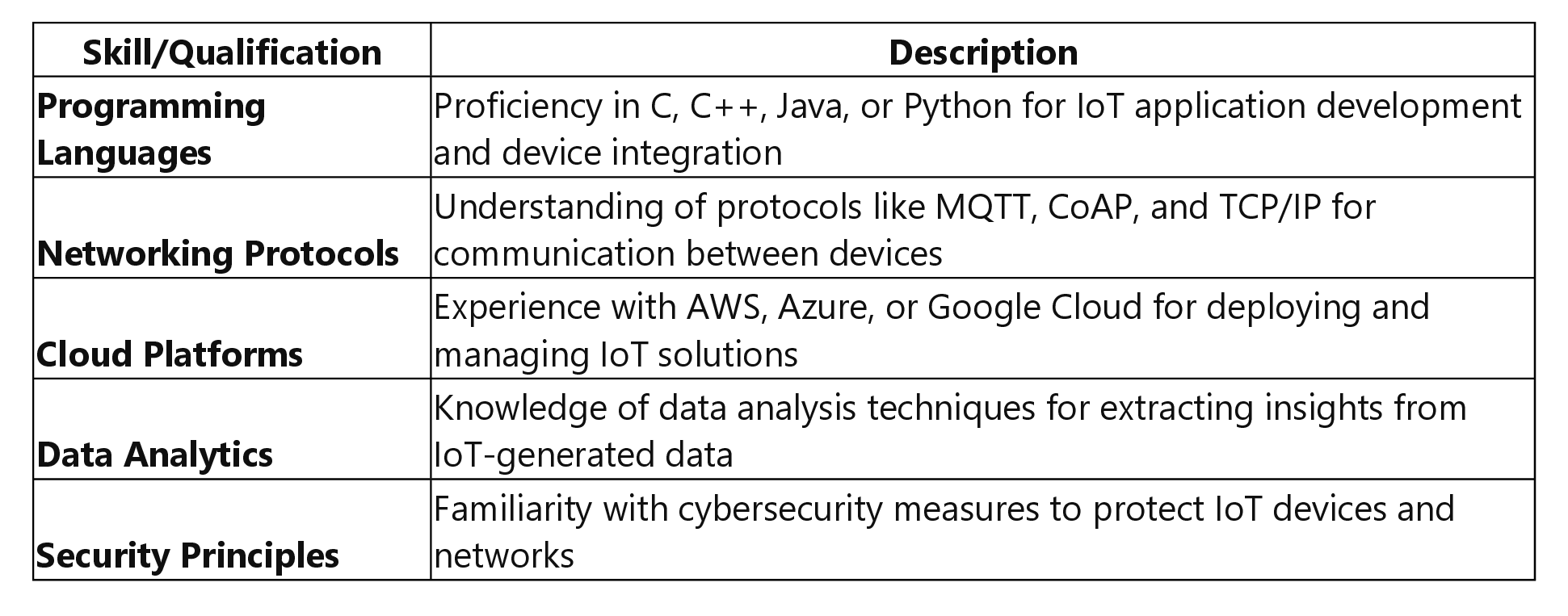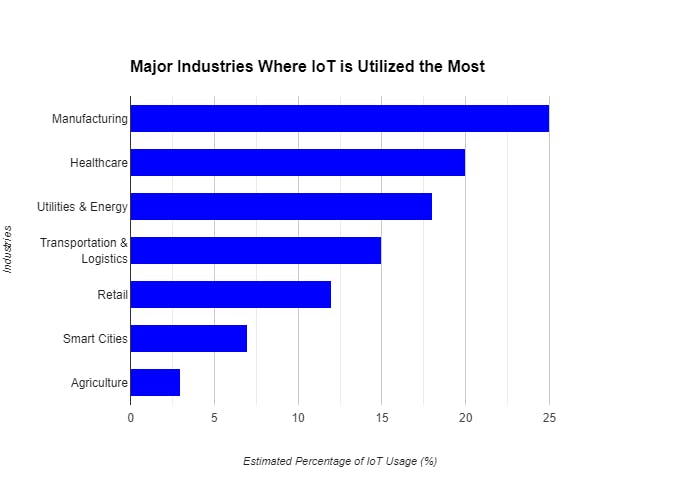Table of contents
- Understanding the Role of IoT Developers in Today's Tech Landscape
- Essential Skills and Qualifications to Look for in IoT Developers
- How to Assess and Hire Top IoT Talent for Your Projects
- Major Industries Where IOT is Utilized The Most
- Future Trends and Challenges in IoT Development: What Employers Need to Know
- Conclusion
Understanding the Role of IoT Developers in Today's Tech Landscape
Our world is changing quickly thanks to the Internet of Things (IoT), and IoT developers are the ones who are creating this change. By creating and developing the hardware and software that enables commonplace things to gather information, exchange messages, and engage with one another, they close the gap between the physical and digital domains.
Internet of Things (IoT) developers are developing solutions that are promoting innovation, efficiency, and convenience across a range of industries, from wearables and smart homes to connected autos and industrial automation. Their knowledge will play a critical role in determining how technology develops in the future and how we see the world.
Essential Skills and Qualifications to Look for in IoT Developers
Certain competencies and credentials are essential for success in this quickly developing industry when you hire IoT developers. First and foremost, creating IoT applications and integrating devices requires knowledge of programming languages like C, C++, Java, or Python. Furthermore, developing networked systems requires a solid grasp of communication technologies and networking protocols.
Additionally highly valued are understanding of data analytics and security principles, as well as experience with cloud platforms like AWS or Azure. An ideal IoT developer also possesses strong communication skills, flexibility to new technologies, and problem-solving abilities.
How to Assess and Hire Top IoT Talent for Your Projects
A comprehensive approach is needed to evaluate and hire the best IoT talent for your projects. Begin by carefully assessing the candidates' technical abilities, such as their knowledge of networking protocols and cloud platforms, as well as their competence in programming languages like C++, Python, or Java. Seek applicants that have experience handling security issues and delivering IoT solutions successfully.
Evaluate their capacity to solve problems and adjust to new technology by using case studies or practical activities. Lastly, since cross-disciplinary cooperation is crucial to IoT development, give top priority to your abilities in effective communication and teamwork. You can find and hire the best individuals to advance your IoT projects by carefully weighing these variables.
Major Industries Where IOT is Utilized The Most
IoT has revolutionized operations and increased efficiency, becoming essential to many different businesses. Manufacturing is one well-known industry that heavily uses IoT, as connected equipment and smart sensors enhance production processes and allow predictive maintenance. Another notable adopter of IoT is the healthcare industry, which uses it to manage medical equipment, monitor patients remotely, and hire IoT developers to innovate in medical technology.
IoT is used in transportation to improve safety and reduce congestion through smart traffic control systems and fleet management. Precision farming methods made possible by IoT technology enhance crop yields and resource efficiency in agriculture. Smart cities also use IoT to manage waste, utilities, and improve citizen services, which is a big change in how people live in cities.
Future Trends and Challenges in IoT Development: What Employers Need to Know
Employers who want to stay competitive in the market must keep up with the latest developments in IoT development, including growing trends and problems. The spread of edge computing, which allows for quicker data processing and lower latency, is one notable trend. Furthermore, IoT systems' incorporation of AI and machine learning algorithms improves data analytics capabilities for wiser decision-making.
Edge Computing: IoT devices will increasingly process data locally, reducing latency and bandwidth usage.
AI Integration: Artificial intelligence will enhance IoT capabilities for predictive analytics and automation.
5G Integration: The rollout of 5G networks will accelerate IoT adoption and enable faster and more reliable connectivity.
Security Concerns: With the proliferation of connected devices, cybersecurity will remain a top priority.
Interoperability: Standardization efforts are crucial to ensure seamless communication between diverse IoT devices and platforms.
But these developments also bring with them new difficulties, such as making sure that strong security measures are in place to ward off cyberattacks and figuring out tricky interoperability problems between different IoT platforms and devices. For employers to take advantage of future IoT development prospects, being educated and flexible must be a top priority.
Conclusion
It's important to have a thorough understanding of the abilities, requirements, and market trends described in this guide before employing IoT developers. Employers are able to successfully traverse this changing terrain by using appropriate recruitment techniques.


